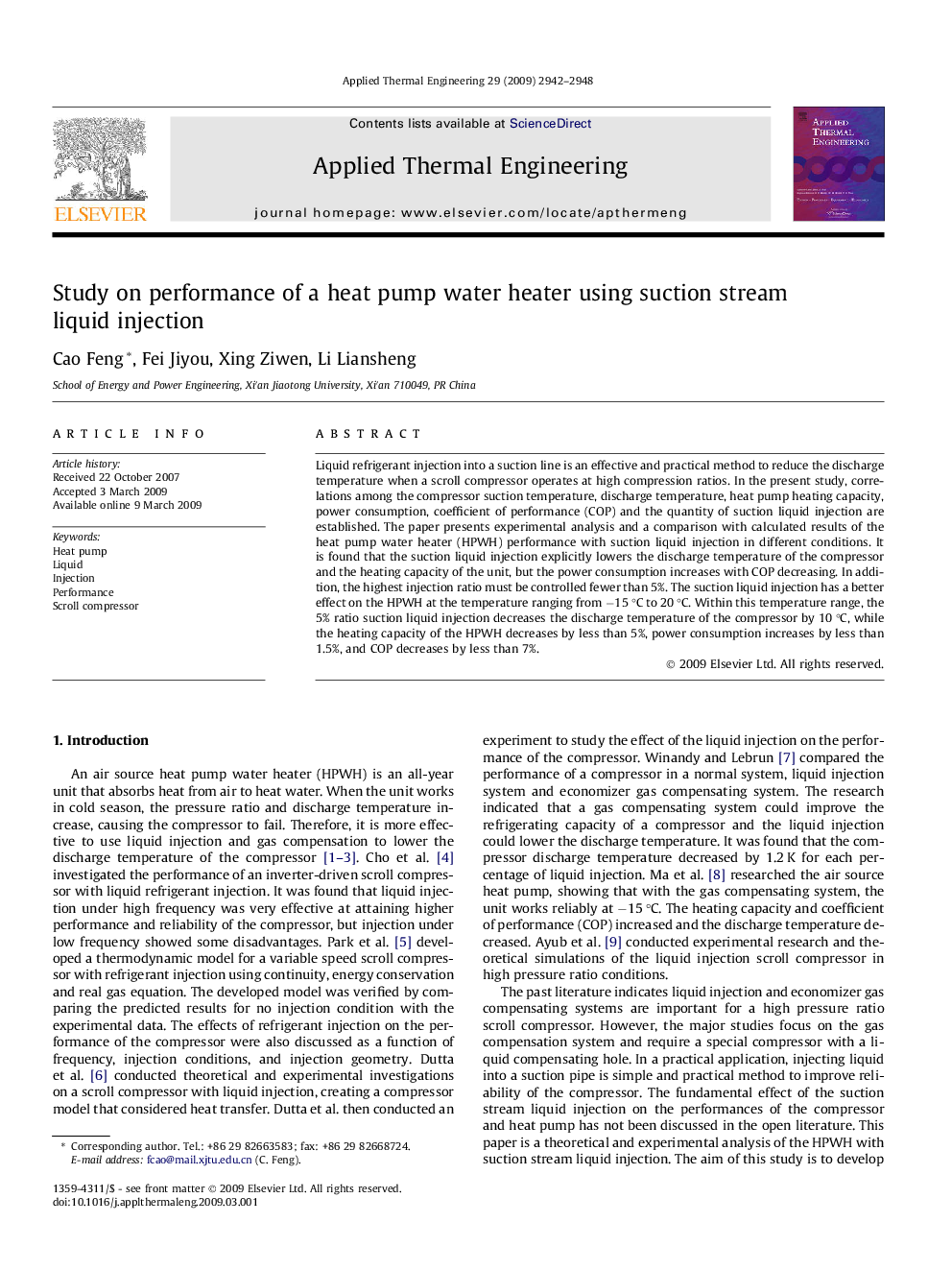| Article ID | Journal | Published Year | Pages | File Type |
|---|---|---|---|---|
| 648781 | Applied Thermal Engineering | 2009 | 7 Pages |
Abstract
Liquid refrigerant injection into a suction line is an effective and practical method to reduce the discharge temperature when a scroll compressor operates at high compression ratios. In the present study, correlations among the compressor suction temperature, discharge temperature, heat pump heating capacity, power consumption, coefficient of performance (COP) and the quantity of suction liquid injection are established. The paper presents experimental analysis and a comparison with calculated results of the heat pump water heater (HPWH) performance with suction liquid injection in different conditions. It is found that the suction liquid injection explicitly lowers the discharge temperature of the compressor and the heating capacity of the unit, but the power consumption increases with COP decreasing. In addition, the highest injection ratio must be controlled fewer than 5%. The suction liquid injection has a better effect on the HPWH at the temperature ranging from â15 °C to 20 °C. Within this temperature range, the 5% ratio suction liquid injection decreases the discharge temperature of the compressor by 10 °C, while the heating capacity of the HPWH decreases by less than 5%, power consumption increases by less than 1.5%, and COP decreases by less than 7%.
Related Topics
Physical Sciences and Engineering
Chemical Engineering
Fluid Flow and Transfer Processes
Authors
Cao Feng, Fei Jiyou, Xing Ziwen, Li Liansheng,
